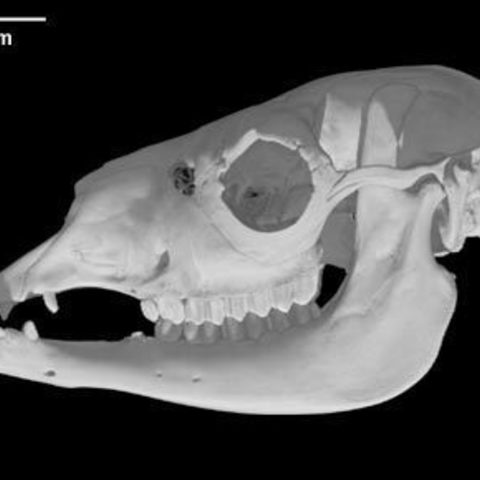
Lama glama, Llama skull
cults3d
The llama (Lama glama) is a domesticated descendent of the guanaco (L. guanaco) (Nowak, 1991). Evidence for domestication dates back between 6000 and 7000 years ago and has been found from archaeological sites in the Andean mountains at elevations ranging from 4000 m to 4900 m (Wheeler, 1995). The species is currently distributed from Peru to northwest Argentina (Nowak, 1991). The llama belongs to the group Camelidae, which includes all species of South American and Old World camelids. Altogether, there are three genera within camelidae, Lama and Vicugna in South America and Camelus in the Old World (Wheeler, 1995). llama Camelidae has several distinguishing characteristics. Camelids lack horns or antlers (Wheeler, 1995) and have a long, thin neck (Nowak, 1991). The stomach is divided into three sections and is ruminating. In the hindlimb, camelids have a highly reduced fibula. The foot bones are fused into a single bone known as a cannon bone and the feet are made up of only two digits (Nowak, 1991). Instead of having a hoof, camelids have a nail that covers the digits. Finally, individuals are able to rest on their stomach by bending their hindlimbs beneath their body (Wheeler, 1995). This specimen (TMM M-2052; female) was made available to the University of Texas High-Resolution X-ray CT Facility for scanning by Dr. Timothy Rowe of the Department of Geological Sciences, The University of Texas at Austin. Funding for scanning was provided by a National Science Foundation Digital Libraries Initiative grant to Dr. Rowe.
With this file you will be able to print Lama glama, Llama skull with your 3D printer. Click on the button and save the file on your computer to work, edit or customize your design. You can also find more 3D designs for printers on Lama glama, Llama skull.
